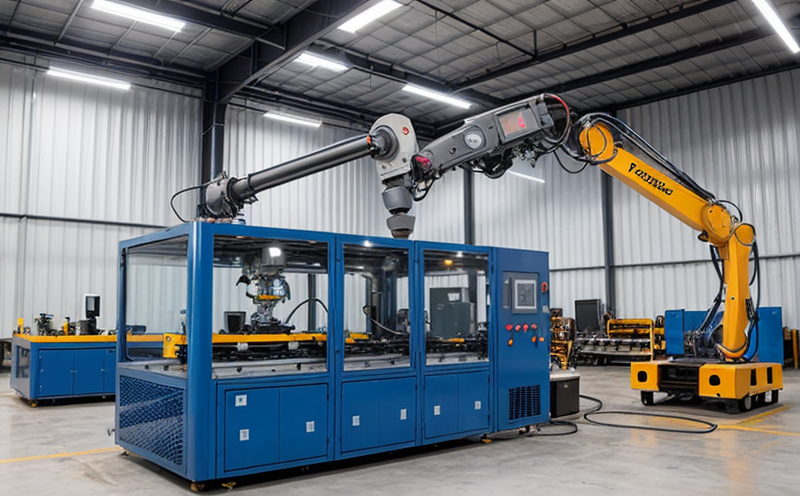ISO 8373 Terminology and Classification Testing of Robots
The ISO standard ISO 8373 provides a comprehensive framework for the terminology and classification of industrial robots. This service ensures that your robotic systems meet international standards, facilitating smoother compliance with regulations across various industries.
Compliance with ISO 8373 is essential in industrial manufacturing and processing because it helps ensure interoperability between different robotic systems used by manufacturers worldwide. This standard defines the terms and classifications necessary for clear communication about robot capabilities, performance metrics, safety features, and integration requirements. By adhering to these guidelines, businesses can streamline their procurement processes, enhance product development efforts, and maintain a consistent approach to quality control.
The rigorous testing process involves several key steps:
- Identification of relevant terminology
- Evaluation of robot performance parameters
- Assessment of safety features
- Verification of compliance with specified classifications
Our team uses advanced instrumentation and software tools to conduct these evaluations accurately. Once completed, we provide detailed reports that outline our findings and recommendations for any necessary adjustments.
This service is particularly valuable for companies involved in the design, manufacturing, or integration of industrial robots. It ensures they remain up-to-date with industry best practices and international standards while minimizing potential risks associated with non-compliance.
Scope and Methodology
| Aspect | Description |
|---|---|
| Terminology Identification | We begin by identifying all relevant terms defined in ISO 8373 that apply to your robotic system. This includes but is not limited to definitions related to robot types, configurations, and performance metrics. |
| Performance Parameter Evaluation | We then evaluate the performance parameters of your robotic system against those specified by ISO 8373. These include measures such as speed, accuracy, repeatability, payload capacity, and reach. |
| Safety Feature Assessment | The safety features of your robotic system are assessed to ensure they meet the requirements outlined in ISO 8373. This includes examining emergency stop mechanisms, collision detection systems, and other protective measures. |
| Classification Verification | We verify that your robotic system meets the classifications specified by ISO 8373. This involves checking that it can be accurately categorized based on its design, capabilities, and intended use. |
The evaluation process is thorough and meticulous to ensure full compliance with ISO 8373 standards. Our team utilizes state-of-the-art instrumentation and software tools to gather accurate data during each step of the testing procedure.
Industry Applications
The application of ISO 8373 terminology and classification within industrial manufacturing and processing is wide-ranging, particularly in sectors where precision and efficiency are paramount. Here are some specific areas where this service can be beneficial:
- Automotive Manufacturing: Ensures that robotic systems used in assembly lines adhere to international standards for performance and safety.
- Petrochemical Processing: Provides consistency across different facilities when specifying and purchasing robotic equipment.
- Pharmaceutical Manufacturing: Facilitates clear communication between suppliers and manufacturers regarding the capabilities of robotic systems used in cleanroom environments.
- Metalworking Industries: Enhances interoperability between robotic arms used for welding, cutting, and other metal processing tasks.
By ensuring compliance with ISO 8373, businesses can improve operational efficiency, reduce errors, and enhance overall product quality. This service is especially important as industries increasingly rely on automation to meet growing demand while maintaining high standards of safety and reliability.
International Acceptance and Recognition
- American Society for Testing and Materials (ASTM): ASTM E376, which deals with the classification of industrial robots, is aligned with ISO 8373 in many respects.
- European Committee for Standardization (CEN): CEN standards related to robot terminology and classification also align closely with ISO 8373.
- Institute of Electrical and Electronics Engineers (IEEE): IEEE documents concerning industrial automation include sections that are consistent with ISO 8373.
- International Electrotechnical Commission (IEC): IEC standards related to robotics technology incorporate many elements from ISO 8373, making it a globally recognized standard.
- Australian Standards: AS/NZS 4652:2017, which specifies safety requirements for industrial robots and robot systems, references ISO 8373 terminology.
- Japanese Industrial Standards (JIS): JIS standards related to robotics also include terms and classifications that align with those defined in ISO 8373.
The widespread adoption of ISO 8373 across these international bodies underscores its importance in the global robotics industry. Compliance with this standard ensures compatibility between robotic systems from different manufacturers, fostering innovation and collaboration within the sector.





